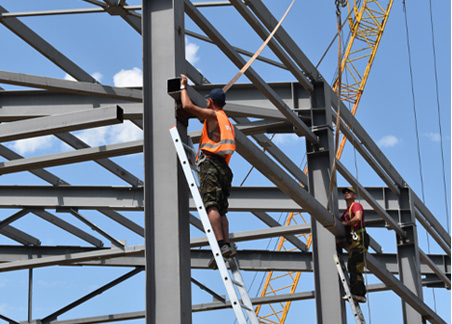
-
 Afrikaans
Afrikaans -
 Albanian
Albanian -
 Amharic
Amharic -
 Arabic
Arabic -
 Armenian
Armenian -
 Azerbaijani
Azerbaijani -
 Basque
Basque -
 Belarusian
Belarusian -
 Bengali
Bengali -
 Bosnian
Bosnian -
 Bulgarian
Bulgarian -
 Catalan
Catalan -
 Cebuano
Cebuano -
 Corsican
Corsican -
 Croatian
Croatian -
 Czech
Czech -
 Danish
Danish -
 Dutch
Dutch -
 English
English -
 Esperanto
Esperanto -
 Estonian
Estonian -
 Finnish
Finnish -
 French
French -
 Frisian
Frisian -
 Galician
Galician -
 Georgian
Georgian -
 German
German -
 Greek
Greek -
 Gujarati
Gujarati -
 Haitian Creole
Haitian Creole -
 hausa
hausa -
 hawaiian
hawaiian -
 Hebrew
Hebrew -
 Hindi
Hindi -
 Miao
Miao -
 Hungarian
Hungarian -
 Icelandic
Icelandic -
 igbo
igbo -
 Indonesian
Indonesian -
 irish
irish -
 Italian
Italian -
 Japanese
Japanese -
 Javanese
Javanese -
 Kannada
Kannada -
 kazakh
kazakh -
 Khmer
Khmer -
 Rwandese
Rwandese -
 Korean
Korean -
 Kurdish
Kurdish -
 Kyrgyz
Kyrgyz -
 Lao
Lao -
 Latin
Latin -
 Latvian
Latvian -
 Lithuanian
Lithuanian -
 Luxembourgish
Luxembourgish -
 Macedonian
Macedonian -
 Malgashi
Malgashi -
 Malay
Malay -
 Malayalam
Malayalam -
 Maltese
Maltese -
 Maori
Maori -
 Marathi
Marathi -
 Mongolian
Mongolian -
 Myanmar
Myanmar -
 Nepali
Nepali -
 Norwegian
Norwegian -
 Norwegian
Norwegian -
 Occitan
Occitan -
 Pashto
Pashto -
 Persian
Persian -
 Polish
Polish -
 Portuguese
Portuguese -
 Punjabi
Punjabi -
 Romanian
Romanian -
 Russian
Russian -
 Samoan
Samoan -
 Scottish Gaelic
Scottish Gaelic -
 Serbian
Serbian -
 Sesotho
Sesotho -
 Shona
Shona -
 Sindhi
Sindhi -
 Sinhala
Sinhala -
 Slovak
Slovak -
 Slovenian
Slovenian -
 Somali
Somali -
 Spanish
Spanish -
 Sundanese
Sundanese -
 Swahili
Swahili -
 Swedish
Swedish -
 Tagalog
Tagalog -
 Tajik
Tajik -
 Tamil
Tamil -
 Tatar
Tatar -
 Telugu
Telugu -
 Thai
Thai -
 Turkish
Turkish -
 Turkmen
Turkmen -
 Ukrainian
Ukrainian -
 Urdu
Urdu -
 Uighur
Uighur -
 Uzbek
Uzbek -
 Vietnamese
Vietnamese -
 Welsh
Welsh -
 Bantu
Bantu -
 Yiddish
Yiddish -
 Yoruba
Yoruba -
 Zulu
Zulu


Nov . 14, 2024 15:42 Back to list
bow shackle
The Concept of the Bow Shackle Understanding Its Significance and Applications
The bow shackle, an essential component in rigging and lifting applications, is a versatile and robust device utilized in various industries such as maritime, construction, and manufacturing. With its unique design, the bow shackle plays a critical role in safely connecting two or more components, such as ropes, chains, and other rigging hardware, to transfer loads effectively.
Design and Structure
The bow shackle is characterized by its U-shaped body with a pin, which can either be threaded or quick-release. The shape of the shackle resembles that of a bow, hence the name. Typically made from strong materials like stainless steel or alloy steel, bow shackles are engineered to withstand substantial loads and resist corrosion, making them ideal for applications in harsh environments. The use of high-quality materials ensures that these shackles provide both durability and safety when utilized correctly.
Load Capacity and Safety Considerations
One of the crucial aspects of any lifting or rigging equipment is the load capacity. Bow shackles come in various sizes, each rated for different weight limits. It is imperative for users to select a shackle that matches or exceeds the weight of the load being lifted or secured. Underestimating the required load capacity can lead to equipment failure and severe accidents.
Safety is paramount in any rigging operation, and bow shackles are no exception. Before use, a thorough inspection of the shackle is essential. Users should check for signs of wear, deformation, or corrosion that may compromise its integrity. Additionally, bow shackles should always be used in the correct orientation, with the load applied in line with the pin to ensure even distribution of force.
Applications in Various Industries
bow shackle

The versatility of bow shackles makes them suitable for numerous applications across different sectors
. In the maritime industry, bow shackles are commonly used for mooring and anchoring vessels. They connect ropes to anchors or assist in securing cargo, allowing for effective weight distribution and stability at sea.In construction, bow shackles are frequently employed in conjunction with cranes and other lifting equipment to secure loads being hoisted. Their robust design allows for secure connections to chains and slings, ensuring that heavy items are lifted safely. Additionally, in the world of manufacturing, bow shackles can be utilized in assembly lines for material handling, providing an efficient means of transporting large and heavy components.
Advantages of Bow Shackles
One of the primary advantages of bow shackles is their ease of use. They can be quickly connected and disconnected, allowing for efficient rigging and de-rigging processes. This usability not only enhances productivity but also reduces the likelihood of errors during operations.
Furthermore, the wide opening of the bow shackle allows it to accommodate multiple rigging components, providing flexibility in various lifting configurations. This feature is particularly beneficial in situations where multiple attachments are necessary, simplifying complex rigging processes.
Conclusion
In summary, the bow shackle is an indispensable tool in the world of rigging and lifting. Its robust design, versatility, and ease of use make it a preferred choice across multiple industries. However, understanding its load capacity and adhering to safety practices is essential to ensure effective and safe usage. As industries continue to evolve and advance, the bow shackle remains a reliable and enduring component of safe and efficient lifting operations. Whether in maritime applications, construction sites, or manufacturing environments, the bow shackle's significance cannot be overstated. It not only facilitates the movement of heavy loads but also stands as a testament to the engineering advancements that prioritize safety and efficiency in the modern world.
Latest news
What Are Construction Tools and How Are They Used?
NewsJul.11,2025
Professional-Grade Duct Rodding Tools for Superior Cable Installation
NewsJul.11,2025
Enhancing Safety and Efficiency with Modern Hot Stick Solutions
NewsJul.11,2025
Empowering Cable Installation with Advanced Rodder Solutions
NewsJul.11,2025
Elevate Your Cable Installation Projects with Cable Pulling Tools
NewsJul.11,2025
Efficient Cable Handling Solutions: Cable Rollers for Sale
NewsJul.11,2025











